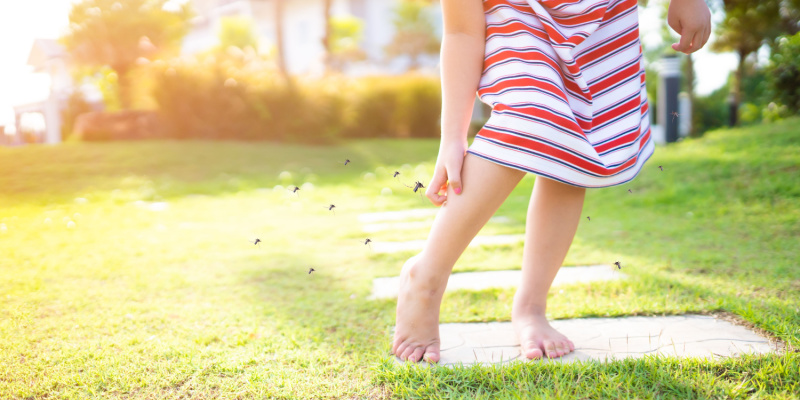Experiencing a mosquito problem in your yard in Pickerington, OH, can turn your outdoor oasis into a place of discomfort and potential health risks. With mosquitoes capable of transmitting diseases like West Nile virus and Zika virus, controlling their population is not only about enhancing outdoor enjoyment but also about safeguarding health. Here’s a comprehensive guide on what to do if you find yourself battling a mosquito infestation in your yard.
Step 1: Identify Breeding Grounds
Mosquitoes can breed in as little as an inch of standing water, making vigilant yard maintenance a crucial first step in mosquito control. Conduct a thorough inspection of your property for any sources of standing water, which can include:
- Clogged gutters and drainage pipes
- Flowerpots, birdbaths, and garden ornaments
- Pools, fountains, and water features
- Children’s toys, tarps, and any debris that can hold water
Once identified, eliminate these water sources. For items like birdbaths or rain barrels, regular changing of water or the use of mosquito dunks, which are harmless to pets and wildlife, can prevent mosquito breeding.
Step 2: Landscape Maintenance
Mosquitoes seek shelter in tall grass, weeds, and dense vegetation during the hot parts of the day. Keeping your lawn mowed and your vegetation trimmed reduces the resting places for adult mosquitoes. Incorporate plants that naturally repel mosquitoes, such as citronella, lavender, and marigold, into your landscaping to add a layer of protection.
Step 3: Use of Repellents and Barriers
Applying insect repellent when spending time outdoors is an effective way to prevent mosquito bites. Look for products containing DEET, picaridin, or the oil of lemon eucalyptus for the best protection. For your home, ensure that window and door screens are intact to keep mosquitoes outside. Consider the use of mosquito nets over areas of frequent outdoor activity, such as dining areas or lounges.
Step 4: Natural Predators and Biological Controls
Encouraging the presence of natural mosquito predators can play a significant role in reducing their population. Birds, bats, and certain fish species, like Gambusia, or “mosquito fish,” feed on mosquitoes and their larvae. Installing a bat house or a bird feeder can attract these natural allies. For ponds or water features, introducing mosquito fish or using bacterial larvicides that target mosquito larvae without harming other wildlife can be effective strategies.
Step 5: Professional Mosquito Control Services
For persistent mosquito problems, professional mosquito control services offer targeted solutions that can significantly reduce the mosquito population in your yard. These services typically include:
- Property Assessment:
A thorough inspection is needed to identify and eliminate breeding sites and advise on landscaping changes.
- Barrier Treatments:
Application of insecticides in vegetation and around the perimeter of your property, providing lasting protection against adult mosquitoes.
- Larvicide Treatments:
Use of products to treat water bodies that cannot be drained, targeting mosquito larvae before they can become biting adults.
Dealing with a mosquito problem in your yard requires a comprehensive approach that includes eliminating breeding grounds, practicing good landscape maintenance, using repellents and barriers effectively, leveraging natural predators, considering professional services, and participating in community efforts. By taking these steps, you can significantly reduce the mosquito population in your yard, making your outdoor space more enjoyable and safer for everyone.

